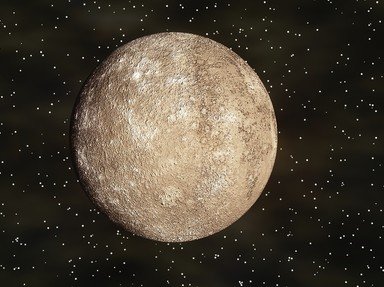Quiz Answer Key and Fun Facts
1. Launched in 2018, which European-Japanese collaborative is on a mission to study Mercury?
2. Similar to ridges on our moon, scientists have discovered Lobate scarps on Mercury. What common name, a sign of aging, is sometimes used instead?
3. What is Mercury's core made of?
4. Scientists have determined that Mercury is shrinking. What do they think is the cause of this shrinkage?
5. Mercury got its name from its speedy orbit around the sun. Of the following options (in Earth time), how fast does Mercury rotate on its axis?
6. The largest feature on the surface of Mercury is an impact crater discovered in 1974. What name, from the Latin word for 'heat', was given to this crater?
7. One of the photos of Mercury's previously less visible regions revealed an image the scientists called a birthmark. Which animal does it most resemble?
8. When the orbital nodes of Mercury and Earth align, Mercury can be seen travelling in front of the Sun. What is this event called?
9. Despite Mercury's proximity to the Sun, it is not the hottest planet in the Solar System. What phenomenon is the reason for this?
10. An area around the Petrach Crater on Mercury has a vastly different look from the rest of the planet. What name, proving scientists can be a bit offbeat, has been given to this very hilly place?
Source: Author
leith90
This quiz was reviewed by FunTrivia editor
rossian before going online.
Any errors found in FunTrivia content are routinely corrected through our feedback system.
